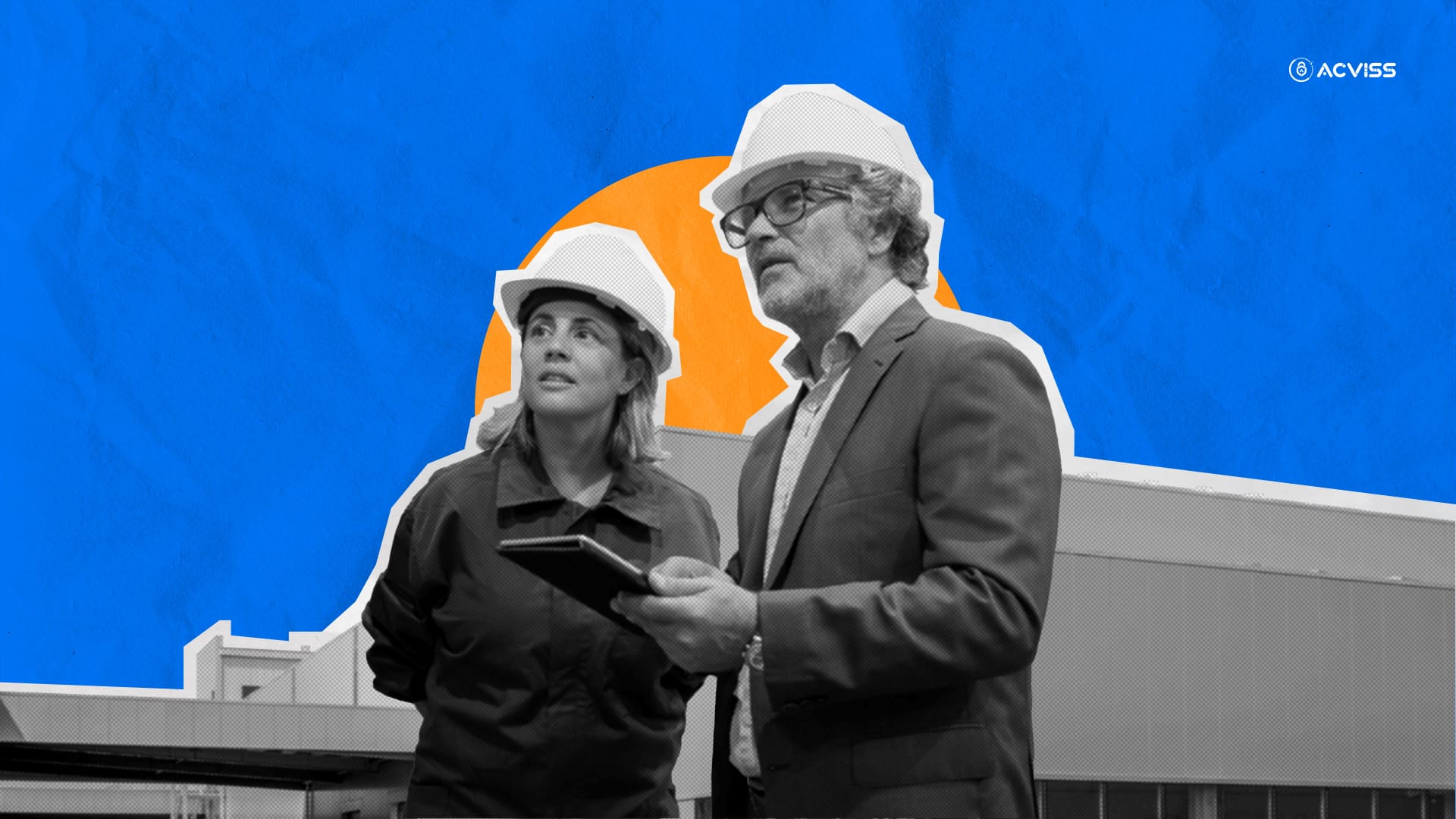How Smart Manufacturing is Reshaping Industries: Success Stories of Industry Transformation

Companies are faced with a clear necessity in a business environment that is marked by more volatility and more frequent disruptions: they must change or risk falling behind. However, the majority of transformation programs are extremely complicated and require years to execute. Most consequently fail to meet their desired goals, either in terms of timing, value, or both. The Boston Consulting Group has created a transformation strategy that turns the tide in a company's favor based on its experience with clients. How does that appear in the actual world? These business examples, which span a variety of sectors and geographies, demonstrate effective changes.
The Rise of Smart Manufacturing
Smart manufacturing incorporates technologies such as Artificial Intelligence (AI), the Internet of Things (IoT), cloud computing, and blockchain to enhance efficiency and transparency across the production cycle. Some of the benefits of smart manufacturing include:
- Real-time monitoring of production processes to detect inefficiencies and reduce downtime.
- Automated quality control using AI-powered inspection systems.
- Predictive maintenance to prevent machine breakdowns.
- Enhanced supply chain transparency through blockchain-based traceability solutions.
- Optimised resource allocation to reduce waste and energy consumption.
Manufacturing Best Practices for a Competitive Edge
To stay ahead in today’s rapidly changing market, manufacturers must adopt best practices that improve efficiency and product quality. Key strategies include:
1. Lean Manufacturing Principles
- Focus on eliminating waste and optimising processes.
- Implement continuous improvement strategies like Six Sigma.
- Use Just-in-Time (JIT) manufacturing to reduce inventory costs.
2. Digital Transformation and Automation
- Deploy IoT-enabled sensors for real-time data collection.
- Use AI-driven analytics to enhance decision-making.
- Implement robotic automation to increase precision and reduce labour costs.
3. Product Authentication and Anti-Counterfeiting Measures
- Integrate unique, non-cloneable security codes for consumer verification.
- Employ AI-driven online monitoring to detect counterfeit products.
- Use blockchain technology for end-to-end product traceability.
4. Sustainable Manufacturing Practices
- Invest in energy-efficient machinery to reduce carbon emissions.
- Utilise recyclable materials and implement circular economy principles.
- Minimise water usage and optimise waste management.
Case Studies: Success Stories of Local Manufacturing Transformations

1. The Growth Transformation of VF Offers Investors Significant Value
Value creation is a potent prism through which to see the potential value of the entire program for shareholders and to determine which initiatives will have the biggest influence on a company's transformation goal.
VF Corporation provides a powerful illustration of how a business can map out its transformation path by keeping a laser-like focus on value creation. VFC was a decent business with capable management in the early 2000s, but its organic growth was constrained. Despite accounting for 80% of the company's revenue, its "jeanswear" and intimate apparel divisions were established, low-gross-margin markets.
Additionally, the company's efforts to reduce costs were yielding fewer and fewer benefits. With yearly revenues of roughly $5 billion, VFC's top line was practically stagnant, and its future growth trajectory was uncertain. Cost control and smart manufacturing efficiency had been the main drivers of VFC's wealth generation, but to the chagrin of management, VFC's valuation multiple was lower than that of the majority of its competitors.
- A steadfast dedication to value creation as the company's main goal: To communicate to investors that it would not chase growth prospects at the expense of profitability, VFC first reduced its growth guidance. Additionally, the company raised its dividend by 90% as a demonstration of management's dedication to balanced value development and best manufacturing practices.
- Persistent Cost Control: By implementing initiatives in sourcing, supply chain procedures, and outsourcing, VF expanded on its well-known operational excellence to create an operating model centered on utilising scale and synergies across its industries.
- A significant overhaul of the portfolio: VFC sold off product lines worth over $1 billion in sales, including its namesake intimate clothing company, to help finance its voyage. Vans, Reef, and Nautica are just a few of the higher-growth, higher-margin brands it acquired with those resources for about $2 billion. As a result, its portfolio now consists of 65% higher-growth lifestyle brands and 70% low-growth heritage brands.
- Establishing a Culture of High Performance: VFC has instilled in its executive team a sense of ownership. Every brand and business's success is evaluated based on its value contribution, and over 200 managers from all major businesses and areas have received training in the fundamentals of value creation. A specialised talent-management program and a few high-profile hires further enhanced VF's management team.
The outcomes of VFC's transformation under TSR are evident. From $7 billion in 2008 to over $11 billion in 2013, the company's revenues have increased, and by 2017, they are expected to surpass $17 billion.
At the same time, profitability has significantly increased, as seen by the mid-2014 gross margin of 48%. With dividend payments of roughly 2 percent annually, the company's stock price tripled from $15 per share in 2005 to over $65 per share in September 2014.
Consequently, during the last decade, the company's Total Shareholder Return (TSR) has placed it in the top quintile of the S&P 500.
2. How a Lean Manufacturing-Focused Strategy Assisted an Industry Leader Like CTG in Increasing Its Efficiency

Cleaning Technology Group (CTG), the famous cutting-edge industrial and precision-cleaning technology provider that has its business spread across the world, had experienced certain significant operational challenges in early 2024. The issue they faced demanded immediate intervention by specialists who could come up with creative solutions to satisfy the expanding consumer needs. At the same time, they were in need to deliver sustainable manufacturing to meet the growing demands of the market. They also needed to increase their efficiency, which lean manufacturing can help with.
CTG turned to TechSolve, the famous Blue Ash, Ohio-based Business Management Consultant, for assistance.
The Challenge: There was no denial of the fact that CTG had an uphill task on their hand. They had to achieve the critical, yet crucial goal of increasing their efficiency level significantly, without sacrificing employee work-life balance.
Chris Whittaker, the President of Cortex Engineered Solutions, a branch of CTG, revealed that the production crew worked a 10-hour day schedule Monday through Thursday to cope with the situation.
The Solution: TechSolve had their job cut out, to start with! Before doing anything else, they helped CTG reorganise their assembly lines so that they could optimise work products. This allowed them to curtail their assembly time by 60%. This was a critical step in reaching the production targets. They simply helped CTG overcome these obstacles by putting lean manufacturing ideas into practice and implementing perfectly customised solutions. They also took a series of practical, doable steps following some extensive research by their experts. These steps produced some quantifiable outcomes and adopted certain feasible strategies that changed things.
They also implemented the 5S principles (Sort, Set in Order, Shine, Standardise, and Sustain). This ensured that each and every tool and equipment, technology component, and resource they used had a specific location, resulting in a well-organised and productive workstation.
TechSolve also conducted team meetings daily to help enhance communication, enabling multiple departments to work in perfect sync with each other. It also guided them to set a clear plan for every day, evaluate the challenges and difficulties from the previous day, and align new objectives. The organisation as a whole was able to improve its teamwork by implementing these frequent check-ins.
The Results: The collaboration between CTG and TechSolve produced several significant, quantifiable outcomes:
- It doubled the production: CTG was able to double its output without increasing shifts or compromising the work-life balance of its employees. This resulted in excellent employee satisfaction.
- It curtailed expenses dramatically: A 60% decrease in assembly time resulted in significant operational savings that had a direct effect on the company's bottom line and increased profit margins.
- It boosted customer confidence: CTG's ability to keep prices competitive despite growing material costs increased customer satisfaction and trust.
3. A German Health Insurance Company Changes to Better Serve Clients

With 130 years of successful history, Barmer GEK is the biggest public health insurer in Germany and has been ranked among the top 100 German brands. Despite the company's comparatively strong financial standing, Dr. Christoph Straub, the company's new CEO, recognised the urgency of taking action as soon as he took office in 2011.
In 2010, the business was still adjusting to the post-merger integration of Barmer and GEK and had to adjust to a rapidly evolving and fiercely competitive market. In terms of both market share and important financial metrics, it was slipping behind rivals. Even as competitors improved their service offerings in a market where prices are fixed, Barmer GEK was hindered by overhead structures that prevented it from providing cost-effective and market-leading customer service.
The business started making bold attempts to alter the way things were done in the past:
- An improved model for client service: Barmer GEK is moving to bigger and more appealing service centers across Germany while cutting the number of its branches by half. Within 20 minutes, over 90% of consumers will still be able to get to a service center. Mobile branches that may visit houses were developed to reach rural areas.
- Enhanced Access to Customers: Barmer GEK made large investments in full-service call centers and internet services because it wished to facilitate client access to the business. While maintaining high levels of customer satisfaction, this directly reduced the number of consumers who needed to visit branches.
- Simplification Of The Organisation: The specialisation and centralisation of claim processing are key components of Barmer GEK's transformation. The corporation is now employing specialised administrators, who are more productive and efficient than under the previous staffing model, and sharing best practices more frequently after shifting from 80 regional hubs to 40 specialised processing centers.
Although Barmer GEK has strategically reduced its workforce in some areas, through proven concepts such as specialisation and centralisation of core processes, it has invested heavily in areas that are aligned with delivering value to the customer, increasing the number of customer-facing employees across the board.
These changes have made Barmer GEK competitive on cost, with expected annual savings exceeding €300 million, as the company continues on its journey to deliver exceptional value to customers. Beyond being described in the German press as a “bold move,” the transformation has laid the groundwork for the successful future of the company.
The Wrap Up Words
The future of manufacturing lies in embracing smart technologies, implementing best practices, and ensuring robust traceability. Whether you're an SME looking to scale or an industry leader aiming for efficiency, now is the time to adopt these innovations. Take the next step in transforming your manufacturing processes, explore cutting-edge solutions, leverage government support, and stay ahead of the competition.
Ready to future-proof your operations? Get in touch with us today and start your journey toward smarter, more sustainable manufacturing!
